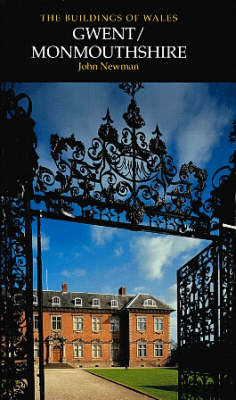Buildings of Wales S.
1 primary work • 2 total works
Book 3
This, the third volume in "The Buildings of Wales" series, covers the whole of historic Glamorgan, the major cities Cardiff and Swansea, the industrialized valleys, the Vale of Glamorgan and the Gower Peninsula, with its tracts of common land and sandy beaches. The work is illustrated with numerous maps, plans and photographs, and complemented by glossaries and indexes. "The Buildings of Wales", founded by Sir Nikolaus Pevsner (1902-83), documents and describes the architecture of the Principality in six regional volumes. In each one a gazetteer details all buildings of significance from Megalithic tombs and Bronze Age round barrows, to grand-century houses, Victorian domestic extravaganzas, great industrial centres and monumental public buildings. The countryside is explored, revealing chapels, stone farmhouses, isolated smallholdings and Celtic crosses.
Gwent/Monmouthshire, call it what you will, is both an integral part of Wales and greatly influenced by its nearness to England. Though small in scale, it is also a country of great natural beauty, where many fine and fascinating buildings can be found. Roman occupation has left remarkable evidence in two outstandingly well-preserved sits, the legionary fortress at Caerleon and the town of Venta Silurum (Caerwent), The splendid series of medieval castles includes Chepstow and Raglan, two of the most magnificent in the whole of Britain, and also such evocative but little known examples as Caldicot and Usk. Among monasteries Tintern Abbey is celebrated for its evocative ruins, while Llanthony Priory is unforgettable in its lonely valley. All these, and many other medieval buildings, including numerous fine parish churches, are fully described and analysed in this book. The farmhouses on the country have been made famous by the three volumes which Sir Cyril Fox and Lord Raglan devoted to them half a century ago. Here will be found up-to-date discussions of many of these houses as they survive today. among larger houses the late Stuart Tredegar House and the extraordinary Victorian mansion, The Hendre, take pride of place.
Victorian industrial development, in ironworking and coalmining, has left a rich legacy vividly recalling the vitality as well as the harshness of this now vanished era. They include major industrial sites such as Balenavon and Ebbw Vale, and Newport retains much of its character as one of the principal ports of South Wales. The heritage of chapels, churches, workmen's institutes and housing development is explored n this book, much of it for the first time. During the20th century the country has seen some of the most exciting architecture anywhere in Wales. The Arts and Crafts movement made an important and varied contribution. Since 1945 schools, housing, and above all factories, have reflected avant-garde thinking, making Gwent/Monmouthshire a particularly rewarding county for modern architecture.
Victorian industrial development, in ironworking and coalmining, has left a rich legacy vividly recalling the vitality as well as the harshness of this now vanished era. They include major industrial sites such as Balenavon and Ebbw Vale, and Newport retains much of its character as one of the principal ports of South Wales. The heritage of chapels, churches, workmen's institutes and housing development is explored n this book, much of it for the first time. During the20th century the country has seen some of the most exciting architecture anywhere in Wales. The Arts and Crafts movement made an important and varied contribution. Since 1945 schools, housing, and above all factories, have reflected avant-garde thinking, making Gwent/Monmouthshire a particularly rewarding county for modern architecture.

